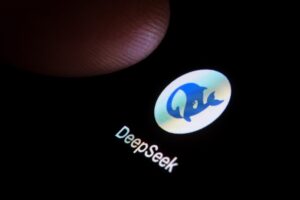Addressing the Realities of AI Commoditization

Understanding the Potential Commoditization of AI Models
Overview of the Current AI Landscape
As anxiety over technologies like DeepSeek rattled financial markets in January, leaders from major technology companies tried to reassure investors that the future of AI remains bright. Satya Nadella, CEO of Microsoft, highlighted in a social media post the idea that advancements in AI would boost company value. He referenced the Jevons Paradox, which states that as the price of a resource declines, its consumption increases. Nadella’s assertion points not just to growing accessibility but also to the potential for AI frontier models to eventually become commoditized.
The concept of commoditization—where a product becomes a standardized, interchangeable item—could significantly alter both commercial dynamics and regulatory frameworks in the AI field. While we may not yet be at that point, the possibility is too significant to overlook, as it could reshape who governs AI technologies and how they are regulated.
What is Commoditization?
Commoditization occurs when products or services become standardized and interchangeable. For instance, commodities like corn or crude oil are generally sold at similar prices regardless of their source. In the AI sector, frontier models might undergo commoditization through various pathways, including the development of open-source models that perform just as well as proprietary ones or through strong competition among firms.
The central challenge lies in maintaining a performance edge that distinguishes one company’s technology from another. As demonstrated by DeepSeek, the capacity for firms to deliver effective models at lower costs could lead to shifts in market dynamics.
DeepSeek’s Role in AI Development
Recent advancements from DeepSeek, notably their V3 base model and the introduction of R1 reasoning models, have raised eyebrows within the industry. These innovations showcase cheaper methods for training AI models, posing a serious threat to established companies like OpenAI. As DeepSeek demonstrates that high-quality models can be developed without immense financial backing, it prompts a reevaluation of what is needed to remain competitive in the AI space.
This shift could lead to lower prices for consumers but also compel companies to adjust their pricing strategies in response to new market entrants that can offer similar capabilities at reduced costs.
Implications of Commoditization for the Industry
Increased Accessibility and Competition
The commoditization of AI models may lead to broader access for consumers. With more companies providing similar services at lower prices, a wider array of users can harness AI technology. This increased accessibility could inspire new developers to enter the market, focusing on niche applications tailored to specific problems.
As companies scramble for differentiation in a commoditized landscape, there will be a greater emphasis on creating user-centric applications. Instead of competing solely on model performance, firms will need to enhance user experience through innovative features.
Hardware Demand Remains Strong
Interestingly, while AI models might become cheaper, the demand for the hardware and infrastructure underlying these models could see a surge. Companies like NVIDIA and ASML witnessed stock rebounds after DeepSeek’s announcement, indicating that even as model prices drop, the need for robust computational resources will persist.
Challenges for Regulators in a Commoditized AI World
Erosion of Lab Authority
As commoditization takes hold, the power that AI development labs currently wield—primarily focused on ensuring safety and ethical use—might diminish. If performance can be achieved from models hosted in various jurisdictions, the protective measures enforced by these labs may be less effective. Consequently, regulation at the state level may become imperative to address potential misuse.
The Difficulty of Self-Regulation
Successful self-regulation in tech often relies on collaboration among industry players. However, as the number of companies producing AI solutions expands, coordinating regulations becomes increasingly complex. Policymakers might find it challenging to impose standards beneficial for the industry while balancing innovation concerns.
Exploring Future Opportunities
The emergence of AI commoditization could create new avenues for international collaboration, particularly in addressing threats related to AI misuse. Governments worldwide may need to unite against potential malicious uses of technology, fostering discussions that include both the U.S. and China.
Staying Ahead of Commoditization
Given the uncertainty surrounding commoditization, the focus may need to shift toward innovation at a faster pace. A proactive approach—developing advanced AI technologies rapidly and effectively—may be the best strategy for companies aiming to sustain their competitive edge.
Countries aspiring for leadership in AI should prioritize attracting and retaining talent, ensuring their technological exploration does not stall amidst increasing commoditization pressures.
Wrap-up
The reality is that while we are still exploring the potential for AI model commoditization, its implications for the industry and regulatory frameworks are profound. The technological landscape is evolving dynamically, and understanding these trends will be crucial as we navigate the future of AI.






